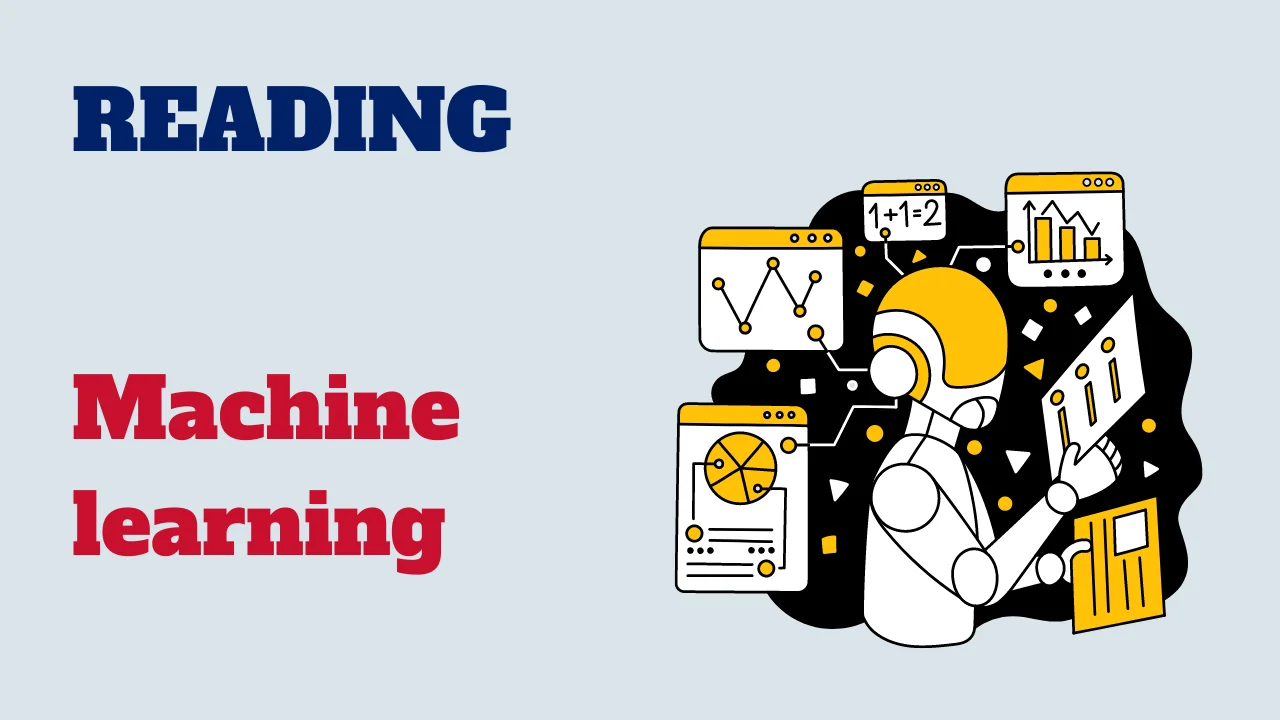Welcome to an exploration of machine learning (ML), a fabulous field at the intersection of artificial intelligence and statistics. In this reading activity, we’ll examine the definition, applications, history, and relationships of machine learning with other fields.

By the end of this activity, you’ll have a better understanding of how machine learning algorithms learn from data and how they are applied across various domains.
Text: Machine learning
Machine learning (ML) is a transformative field of artificial intelligence (AI) that empowers computers to learn without explicit programming. Imagine a student who gets better at recognizing patterns and solving problems the more data they encounter. That’s the core principle behind machine learning algorithms.
At its heart, ML algorithms analyze massive datasets, identifying patterns and relationships between data points. This process, called training, allows the algorithm to make predictions or classifications on new, unseen data. For instance, an ML algorithm trained on millions of images can identify objects in a new photograph.
There are two main categories of machine learning: supervised and unsupervised. Supervised learning is like having a teacher provide guidance. The algorithm is trained on labeled data, where each data point has a corresponding answer. An email spam filter, for example, learns from labeled emails (spam and not spam) to categorize incoming emails.
Unsupervised learning is more like exploring on your own. The algorithm analyzes unlabeled data, uncovering hidden patterns and groupings within the data itself. Imagine a music streaming service using unsupervised learning to recommend songs based on your listening history, even if the songs aren’t explicitly categorized.
Machine learning has revolutionized various aspects of our lives. It powers recommendation systems on online platforms, fraud detection in financial transactions, and medical diagnosis tools. Self-driving cars rely on ML for image recognition and real-time decision-making.
However, machine learning isn’t without its challenges. Biases in training data can lead to biased algorithms, highlighting the importance of responsible data collection and ethical considerations. Additionally, the “black box” nature of some complex algorithms can make it difficult to understand how they arrive at their decisions.
Despite these challenges, machine learning offers immense potential for the future. As algorithms become more sophisticated and data collection practices evolve, we can expect even broader applications in areas like scientific discovery, personalized education, and environmental sustainability. Machine learning holds the key to unlocking a future driven by intelligent automation and data-driven insights.
Comprehension questions
Congratulations on completing the study of machine learning! You’ve learned about the definition, applications, history, and relationships of machine learning with other fields. Machine learning continues to evolve rapidly, with advancements in algorithms and technologies shaping its applications across various domains. As you continue to explore this dynamic field, remember the fundamental principles of learning from data and making predictions, which underlie the essence of machine learning. Keep exploring and applying machine learning concepts to tackle real-world challenges and drive innovation in diverse industries.



